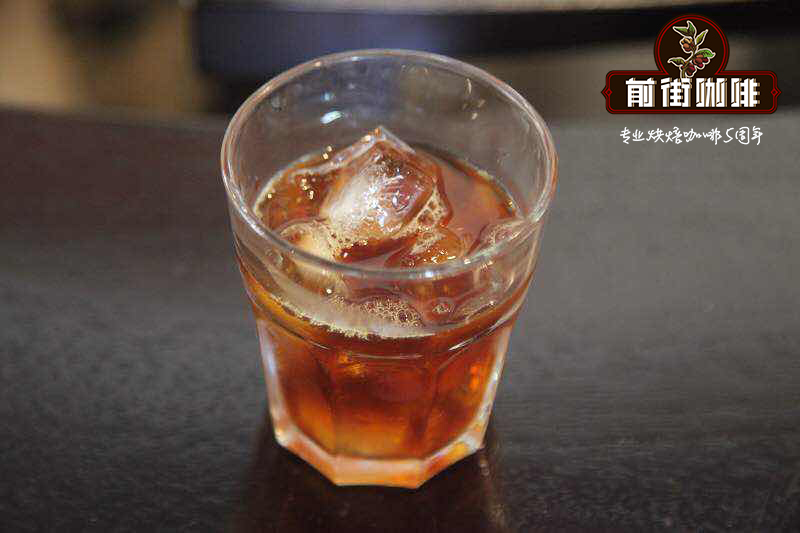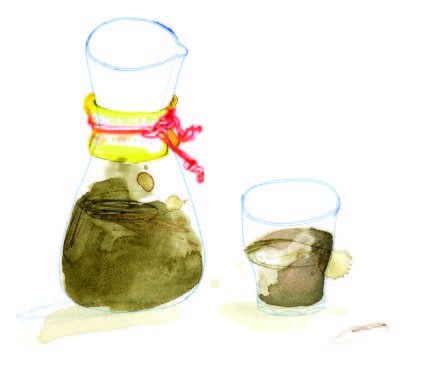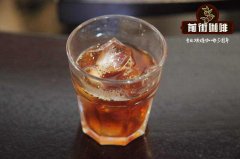What is the planting history and taste trend of Hartman Manor in the Walken area of Panama? What kind?

Professional coffee knowledge exchange more coffee bean information please follow the coffee workshop (Wechat official account cafe_style)
What is the planting history and taste trend of Hartman Manor in the Walken area of Panama? What kind?
Producing area: the Vulcan Baru volcanic area of Panama
Varieties: Catuai, Caturra, Pacamara, Typica, Maragogype, Bourbon,
Treatment: washing and insolation
Altitude: 1250-1800 m
Flavor description:
Washing-a touch of sweet and sour fruit with a slightly herbaceous finish
Sun-tropical acidity and wine aromas with strong fruit juice taste
It is one of our dreams to be able to visit every coffee estate in person. Before the dream comes true, organic certification or other relevant certification is the main way to win trust when we cannot visit the coffee farm. Another way is to know the management philosophy and direction of the manor owner through the manor background story reported by the article media, coupled with multi-party verification can increase the credibility of the information. Such a manor with a good management concept and really implemented will be the object of our support even without certification, as is the case with the historic Hartman estate in Panama.
Hartman Manor is a family business currently run by the third generation, including Santa Clara Finca Hartmann and Ojo de Agua, located in a forest reserve of nearly 100mu of Parque Nacional de La Amistad between 1.300 and 2.000 m above sea level. Coffee grows in the shade of the local rainforest that has existed for many years. Instead of cutting down trees, they plant the necessary shade tree species to maintain a good natural circulation of soil and life.
From the words of the above operators, we can get a glimpse of their thoughts on the relationship between ecology and production.
Each family member is keen on management and has different abilities in all aspects of farm production and tourism. Coffee is not only a way of life for them, but also a part of culture and family. Although there is a lot of work, it also brings a lot of love. Their employees come back every year, just like their buyers, because they like their vision of working with nature and working without destroying the land.
When it comes to Panamanian coffee, the traditionally familiar boutique coffee producing areas are mostly from Boquete, but in recent years, coffee from the Volcan producing area has gradually emerged in the boutique market. Generally speaking, the average annual rainfall in this producing area is less than that of Boguit. At the same time, the geographical environment to the west of the Baru volcano also makes coffee more dry, sweet and fragrant than the Boguet region. In the early days, the Walken area mostly grew fruits, vegetables and other cash crops, and only a few farmers made coffee again, and the pioneer of coffee cultivation in the Walken area belonged to the Hartman family, which is well-known in Panama.
The story of the Hartmann family in Panama can be said to be a long history of European immigration. Alois Strasil Hartmann was born in the Austro-Hungarian Empire at that time, that is, the present-day Czech Republic. Later, due to the unstable national politics, Alois decided to start a new life abroad. At first, Alois stayed in New York and then moved to Panama, but after a few months, Alois found that he was not adapted to the urban life of Panama City. DNA, who had always had adventure in his blood, decided to work and settle down along the mountain line to the Walken area shortly after quitting his job. He also married his first wife Susana Troetsch and gave birth to Hartmann Troetsch, the founder of Hartman Manor. Hartmann Troetsch inherited his father's farmland and began land preparation work in 1940, and started the history of Hartman Manor to this day. During the initial reclamation, the old Hartman decided to retain most of the original woodland in the manor, and this concept of primary forest protection has always influenced the third generation of manor owners who are now in charge of management. Hartman Manor still maintains this tradition. The coffee planting land in the manor accounts for only about 20% of the whole manor. due to the results of woodland conservation, there are quite a lot of native birds in the manor. And the most famous big-billed bird in the area has naturally become the standard Logo of the manor.
Important Notice :
前街咖啡 FrontStreet Coffee has moved to new addredd:
FrontStreet Coffee Address: 315,Donghua East Road,GuangZhou
Tel:020 38364473
- Prev

Cold Brew cold coffee is not iced coffee! What on earth is cold coffee?
Professional coffee knowledge exchange more coffee bean information Please follow the coffee workshop (Wechat official account cafe_style) We can often drink iced coffee (iced coffee), but in fact iced coffee is not equal to cold extracted coffee (cold brew). We all know that iced coffee was very popular in the last coffee generation, whether with sugar, whipped cream or seasoned syrup.
- Next

What are the planting history and flavor characteristics of Panamanian Hartman wine in the sun? The characteristics of the variety?
Professional coffee knowledge exchange more coffee bean information please follow the coffee workshop (Wechat official account cafe_style) Panamanian Hartman wine sun what are the planting history and flavor characteristics? The characteristics of the variety? Hartman wine-scented tanning is launched for the second time this year. About half a year ago, it was a single variety of Kaddura, while this time it was a mixed harvest of Kaddura and Kaduai.
Related
- Detailed explanation of Jadeite planting Land in Panamanian Jadeite Manor introduction to the grading system of Jadeite competitive bidding, Red bid, Green bid and Rose Summer
- Story of Coffee planting in Brenka region of Costa Rica Stonehenge Manor anaerobic heavy honey treatment of flavor mouth
- What's on the barrel of Blue Mountain Coffee beans?
- Can American coffee also pull flowers? How to use hot American style to pull out a good-looking pattern?
- Can you make a cold extract with coffee beans? What is the right proportion for cold-extracted coffee formula?
- Indonesian PWN Gold Mandrine Coffee Origin Features Flavor How to Chong? Mandolin coffee is American.
- A brief introduction to the flavor characteristics of Brazilian yellow bourbon coffee beans
- What is the effect of different water quality on the flavor of cold-extracted coffee? What kind of water is best for brewing coffee?
- Why do you think of Rose Summer whenever you mention Panamanian coffee?
- Introduction to the characteristics of authentic blue mountain coffee bean producing areas? What is the CIB Coffee Authority in Jamaica?

